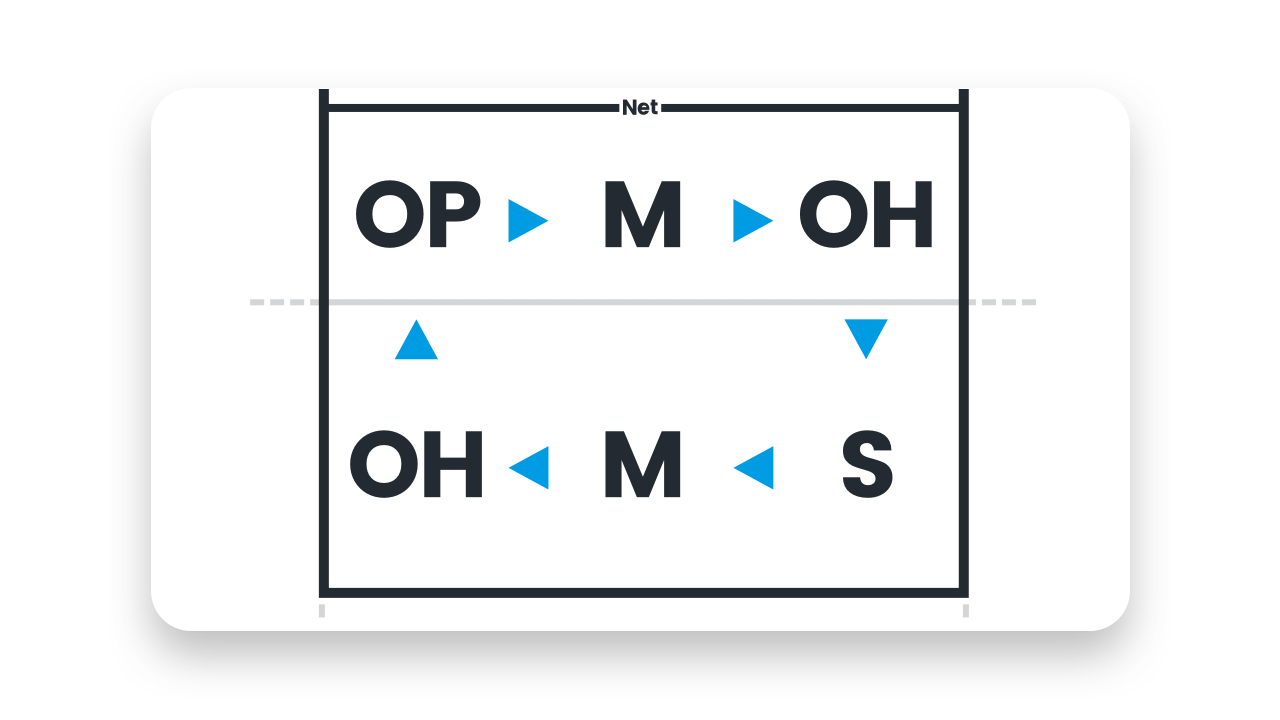A Volleyball Coach’s Guide to Assist

Use these tips to get the best stats for your team and unlock insights with data.
You'll save time with Hudl Assist. But it can mean a few initial adjustments to your routine and workflow. So we put together a few tips to help get you ramped up for season and ready to use Assist.

Now It's Time for Assist
Understand the rotations.
With Assist, you can see player actions and uncover tendencies you might not have discovered otherwise. Filtering by rotation can play a huge role in this. When you submit to Hudl Assist, let us know which rotation your team starts in for each set.
For example, if you have serve in the first set with your setter in right back, you're starting in rotation 1. In set two, you have serve receive to start but you still want your setter to be your first server. So you back up one to start in rotation 6. Then in set three, you have serve first again with your setter in right back—you're starting in rotation 1.

A common rotation
Rotation 1: Your first setter serves.
Rotation 2: The player following the first setter, usually an outside, serves.
Rotation 3: The player following your rotation 2 server, usually a middle, serves.
Rotation 4: The opposite/right side or second setter serves.
Rotation 5: The player after your opposite, usually your other outside, serves.
Rotation 6: The player after your rotation 5 server, usually your second middle, serves.
Use this rotation data to confirm your coaching instincts. Maybe you have a feeling that something is off with a certain rotation. After a look at the data, you realize that the opponents’ hitting percentage is up in that rotation and your team’s blocks are significantly down. Use that insight to create a practice plan to improve your defensive output.
Enter the match score.
Once you add your rotations, submit the match score—the number of sets you won compared to your opponent. This will help us track the flow of the game to generate accurate stats for your team.
Don’t Forget the Player Stats
Triple-check your roster.
Before your match, make sure you have an updated roster with current player names and jersey numbers. We track stats by those jersey numbers, so it’s important that they’re correct.
Add your athletes to the current season.
Get these added so your athletes are listed on the current season. Only athletes listed on this season’s roster will pull into Hudl Assist—otherwise, their stats will be attributed to “Unknown Athlete.” We don’t want to credit your graduated libero with an ace just because she’s still listed on the team. So list the season for all active players to avoid any issues.
Capture jersey numbers.
When you record your games, check that you can clearly see players’ numbers. Whether you need to get a lens for your iPad or change your vantage point, you want to be sure it’s a clear shot.
Once you have full stats from Assist, dig deeper with interactive reports like attack tendencies. And if you have additional questions, check out our Help Center.